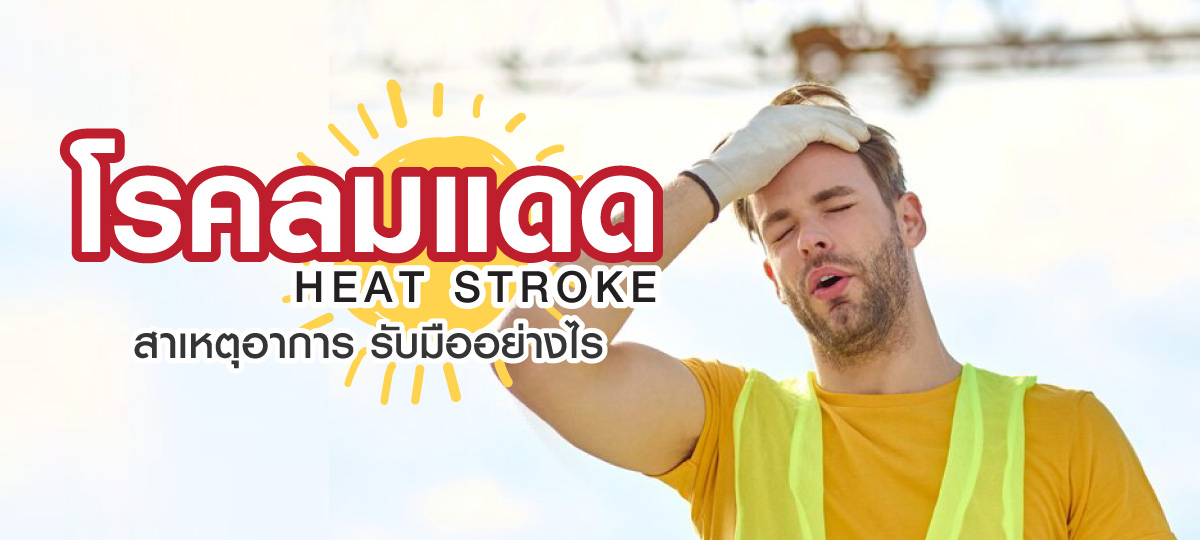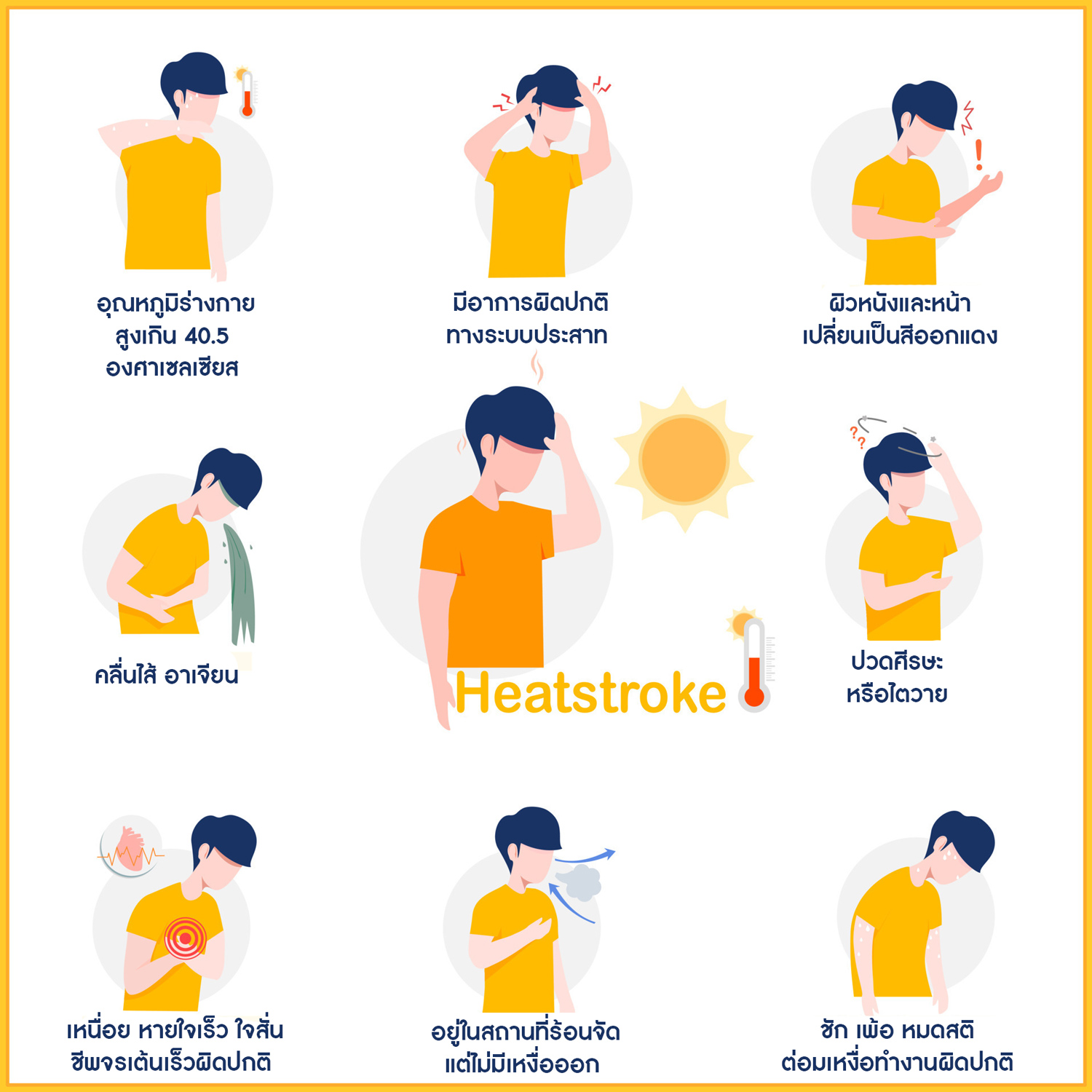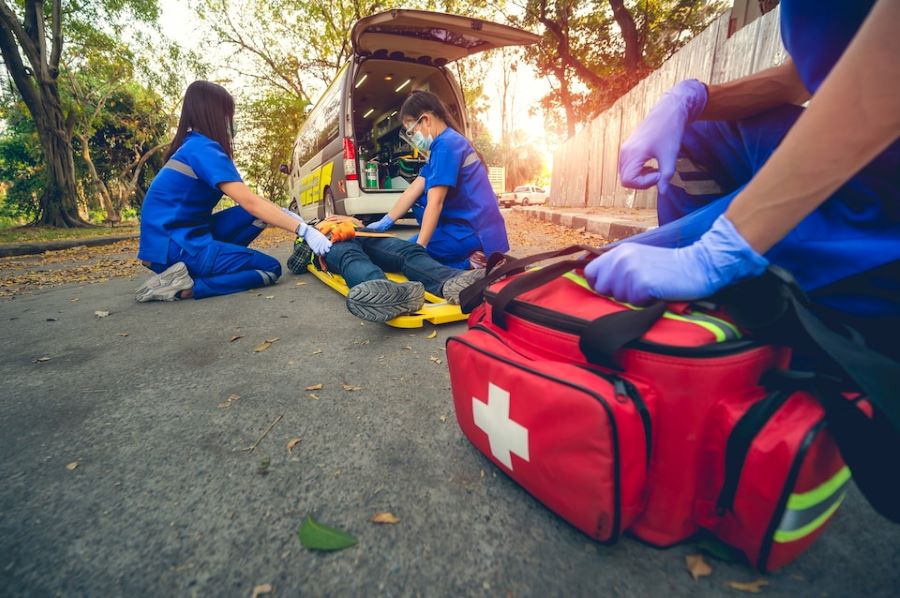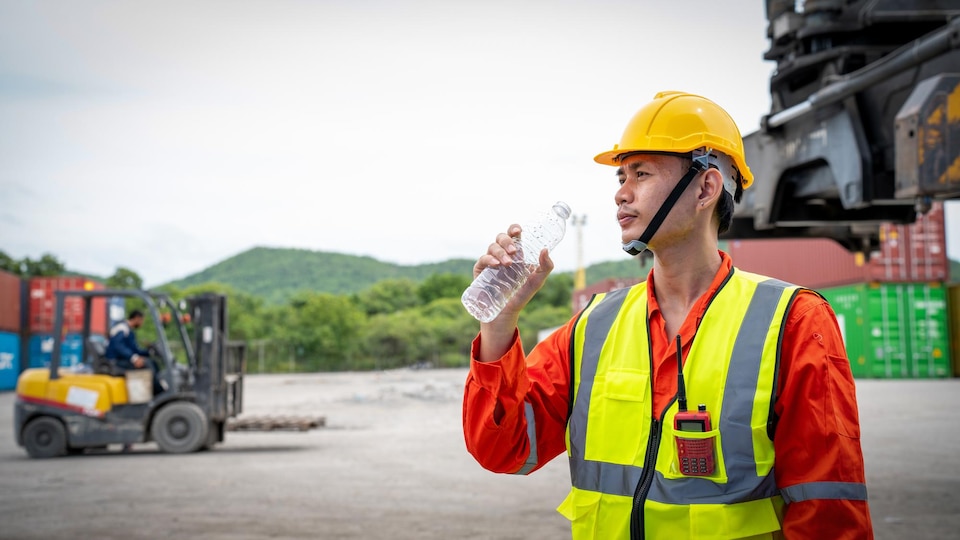Heat Stroke | GLOVETEX.COM

With the alarming rise in temperatures, every region in Thailand is significantly impacted by the intense heat, leading to increasingly hot weather. This could be a contributing factor to the occurrence of “Heat Stroke,” a condition that has become more prevalent in today’s world and can potentially be life-threatening.

Heat stroke is a condition where the body temperature exceeds 40.5°C (104.9°F) due to prolonged exposure to extremely high temperatures, and the body’s inability to regulate its temperature. This can severely affect the nervous system, heart, and kidneys, potentially leading to death.
Causes of heat stroke include being in an environment with extreme heat, especially in hot and humid conditions, or engaging in strenuous physical activities in such environments. Other risk factors that can trigger heat stroke include wearing thick clothing that hinders sweat evaporation, consuming alcohol, dehydration, and inadequate fluid intake.
Individuals at higher risk of heat stroke include young children and the elderly (over 65 years old), who may have slower adaptation to temperature changes and are more prone to dehydration. Those unaccustomed to hot weather, such as travelers to hotter climates or those exposed to sudden heat waves, are also at risk. Additionally, people taking certain medications like some blood pressure drugs, diuretics, antipsychotics, antihistamines, laxatives, and stimulants such as cocaine, and those with heart disease, lung disease, obesity, or a history of heat stroke, are more vulnerable.
Symptoms of heat stroke to watch for include a body temperature above 40.5°C, neurological symptoms like agitation, slow speech, confusion, seizures, delirium, or unconsciousness. The sweat glands may malfunction, resulting in little or no sweating despite the heat. Other symptoms include nausea, vomiting, flushed skin, fatigue, rapid breathing, palpitations, unusually fast pulse, headache, or kidney failure indicated by dark urine, and elevated muscle enzymes.

First aid measures include moving the affected person out of the sun and into a shaded area, removing unnecessary clothing, cooling the body by methods such as wiping with cold water, especially on the back of the neck, armpits, and groin, using a fan with cool mist or turning on air conditioning, and drinking plenty of water and electrolyte solutions to prevent dehydration and loss of minerals.

Preventive measures to avoid heatstroke include wearing lightweight and breathable clothing to allow the skin to dissipate heat more easily, using sun protection gear, drinking at least 8 glasses of water a day, and taking breaks in shaded areas, especially during the hottest part of the day, which is midday. If you are not yet accustomed to hot weather, such as when you have recently moved to a hotter country, you should avoid strenuous work or intense exercise until your body adjusts to the increased temperature. If you know you are in a high-risk group for heatstroke, such as having underlying health conditions, being elderly, or taking medications that increase risk, you should monitor your symptoms closely. If you begin to experience signs of heatstroke, you should administer first aid immediately and seek medical attention at once.

ขอบคุณข้อมูลจาก TOSH / สสปธ.
https://www.tosh.or.th/index.php/blog/item/1318-heat-stroke
information. or request a quotation
Call Center: 034-878762 ext. 3
Or you can follow us at : Click here
Hotline 083 989 7512 (telephone sales department)
